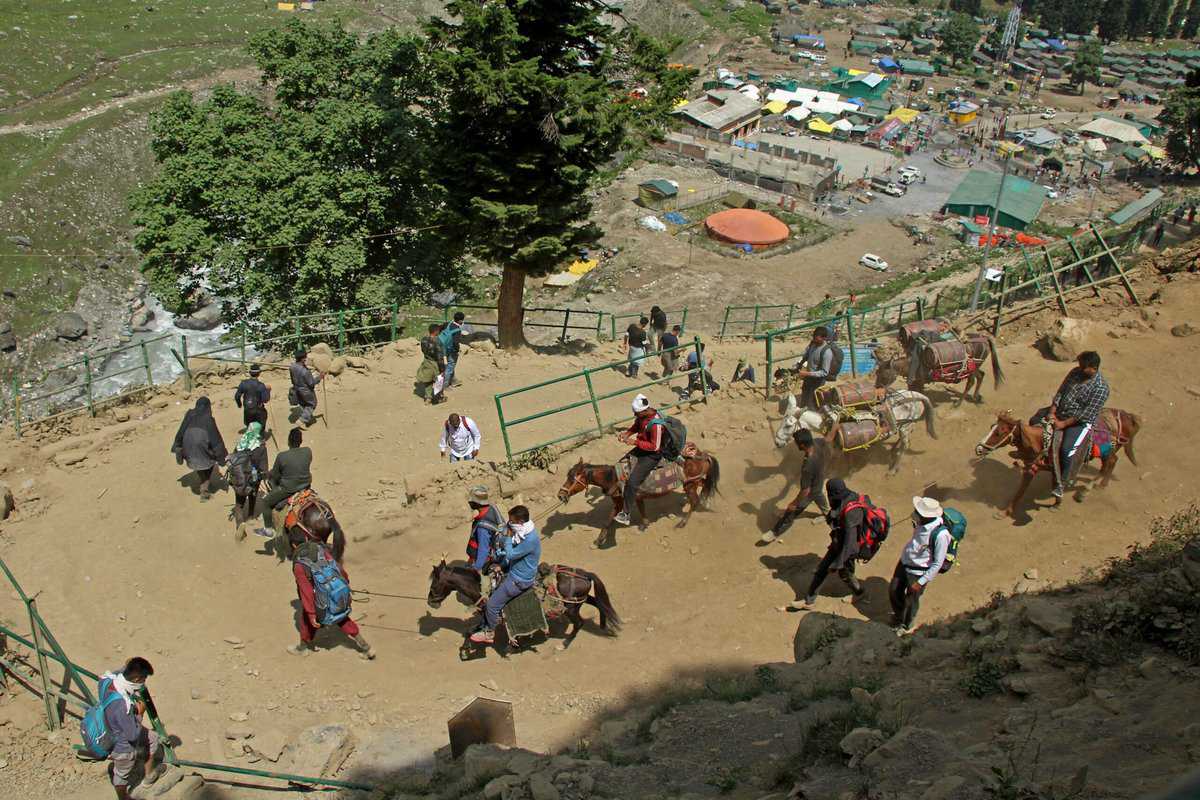
The Union Territory Government of Jammu and Kashmir has made public a proposal of construction of road to the cave shrine of Amarnath in the high Himalayas in Kashmir. The underlined idea is to smoothen the journey of the pilgrims, who come in thousands to the shrine, which is nestled at the height of 3800 meters above sea level.
This proposal’s basis is to enthuse the would be Hindu pilgrims and also the tourists to have better and smooth access to the shrine, saving them from trekking on the narrow bridal paths at the Himalayas heights, as high as 14,500 feet above sea level, and the fury of the nature which often strikes the existing routes. But the main issue is that how the fragile environment of the region is protected when the work on this project gets underway.
As the cornerstone of the proposal is to increase facilities for the pilgrims who trek for days together to have a glimpse of Shivlingam or ice stalagmite- revered as image of Lord Shiva- in the cave shrine, the idea would be embraced by Hindus all over the country wishing to pay obeisance at the shrine. The Amarnath shrine, the myth goes, is the place where Lord Shiva narrated the tale of immortality to his wife Parvati, both in the religious and political senses. Religious angle is quite clear, Hindus would get better facilities and access to the shrine of their faith. At the same time, it has its political resonance, as to why this is being made possible now, while it could have been done before as well. Somewhere down the line it will be traced to the abrogation of Article 370, the constitutional provision which existed in the constitution until August 5, 2019, was considered as a barrier for the Indian nation to have its full say in Jammu and Kashmir.
Lieutenant Governor Manoj Sinha made this disclosure while speaking at a function ahead of the celebration of Mahashivratri- to hail the wedding of Lord Shiva at Jagti, a satellite township of Kashmiri Pandit migrants in the suburbs of Jammu. He was making an attempt to cool the tempers of the migrant community angry with the administration for not having taken care of them in adequate manner. The community is also incensed by the government dictate to the migrant employees, serving in the Valley under the PM package, to stay there. The community’s employees are agitating for their transfer to safe areas in Jammu where there is no threat of terrorists killing them. Their agitation had started after a series of killings of employees in the Valley in May-June last year.
Sinha while assuring the community that his doors were open 24×7 for the community members as he is committed to resolve all their genuine issues, including safe residential localities in the Valley, also announced that a proposal has been made to have a road up to Amarnath shrine. The preliminary report has been prepared by the National Highway Infrastructure Development Corporation Limited and is expected to be approved this year and the project would be completed in next four to five years that is the pilgrims would be able to travel to the shrine by road by 2027.
Apparently, the idea is to help more and more pilgrims to visit the Himalayan shrine, as the existing routes of the pilgrimage, passing through Pahalgam, world famous tourist resort in south Kashmir and Baltal the take-off point from north Kashmir running parallel to the strategic Srinagar- Leh highway, pose a challenge of the terrain and weather. There have been many occasions when the pilgrims have been trapped by rains and snow and flash floods. Last year, 14 pilgrims had died n flash floods , and there have been similar incidents in previous years.
The idea of road from points, it seems, is to save the pilgrims from such natural disasters, and in case of emergencies to ensure speedy evacuation. This will also encourage the Hindu pilgrims from all over the country to travel smoothly, and their number which veers around 400,000 per year – the pilgrimage season is around 40 to 60 days during summer.
The connectivity to the shrine by road will increase not only the pilgrim traffic but also that of the tourists, and the number of such arrivals may move up to tens of millions. But there is a concern that construction of the proposed road will impact the sustainability of a number of glaciers – Kolhai, Thajwas, Pachtarni, Shesh Nag and Amarnath -. This has its own costs, which can hurt the environment.
Views expressed are personal
